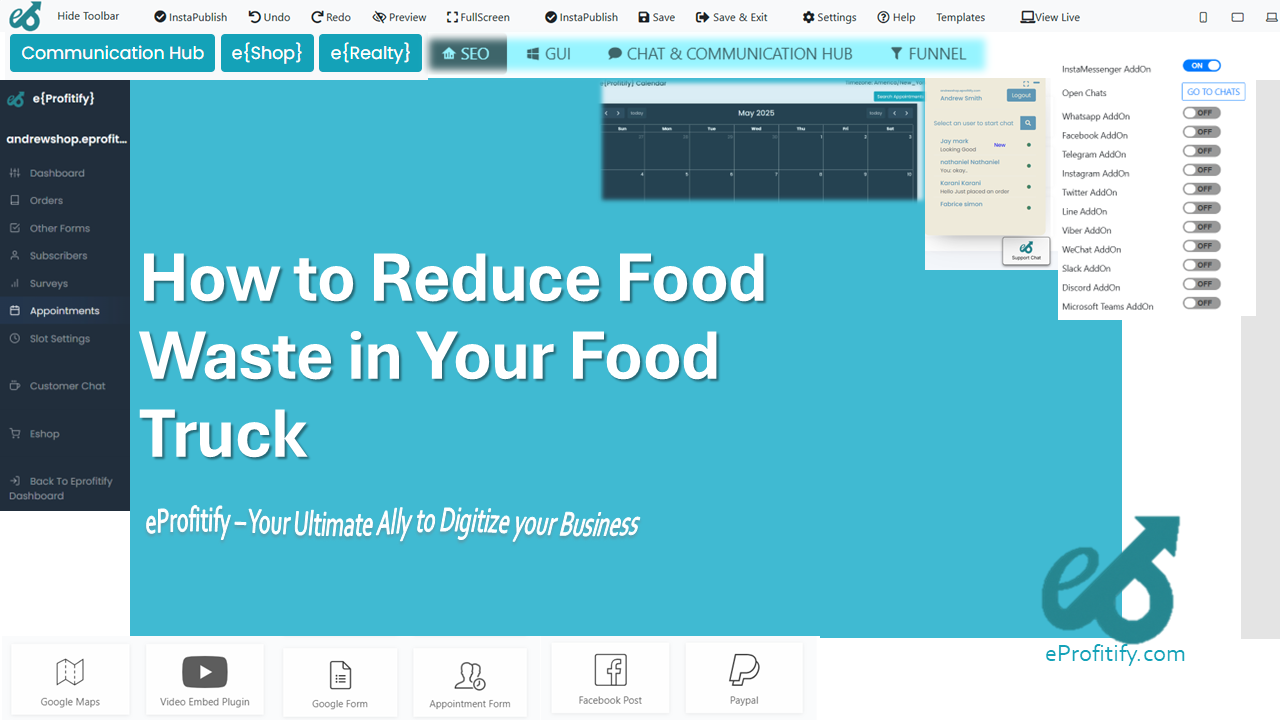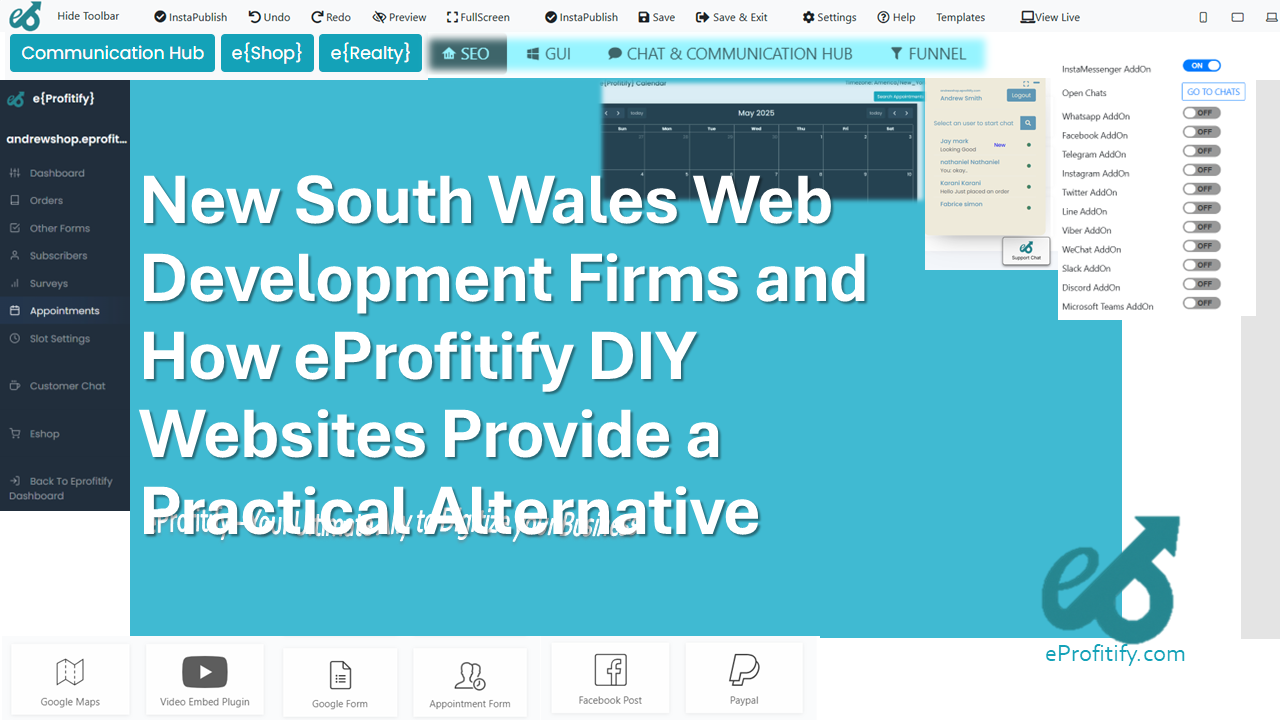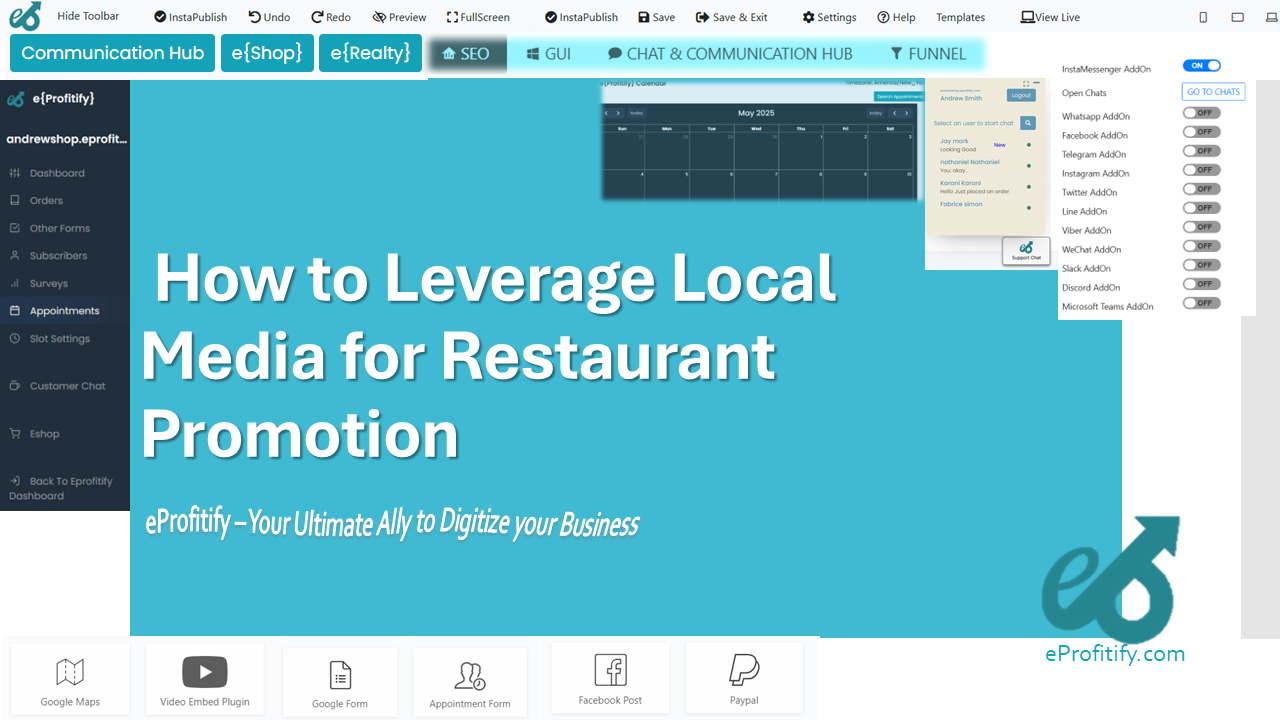How to Reduce Food Waste in Your Food Truck

Schedule a LIVE Zoom call with an eProfitify Expert.
How to Reduce Food Waste in Your Food Truck: Strategies and Tech Solutions
Food waste is a global crisis, with roughly one-third of all food produced worldwide (approximately 1.3 billion tons annually) ending up in landfills, according to the United Nations Food and Agriculture Organization (FAO). In the U.S., the USDA estimates that 30–40% of the food supply goes uneaten, costing businesses and households billions of dollars each year. For food trucks, which operate on tight margins and limited storage, waste reduction isn’t just an ethical imperative—it’s a financial necessity. Studies suggest that food waste can consume 4–10% of a food truck’s annual revenue, directly impacting profitability. Fortunately, proactive strategies and modern tools like eprofitify—a leading website publishing and management platform—can help streamline operations and minimize waste.
The Impact of Food Waste on Food Trucks
Food trucks face unique challenges: limited space, fluctuating demand, and perishable ingredients. Overstocking, inefficient prep, and inaccurate demand forecasting lead to spoiled ingredients and unsold meals. Beyond the environmental toll, this waste erodes profits. For example, if a food truck generates $150,000 annually, losing even 5% to waste equals $7,500 lost. Reducing waste improves sustainability and boosts the bottom line.
Strategies to Minimize Waste in Your Food Truck
1. Menu Engineering: Simplify and Optimize
A compact, well-designed menu reduces the need for diverse ingredients, lowering the risk of spoilage. Analyze sales data to identify top-selling items and eliminate underperforming dishes. For instance, if 70% of sales come from three menu items, focus on optimizing those.
How eprofitify Helps: Use eprofitify’s CRM tools to track customer preferences and sales trends. This data-driven approach lets you tailor your menu to popular demand, reducing inventory complexity.
2. Inventory Management: Track and Rotate Stock
Adopt a “first in, first out” (FIFO) system to ensure older ingredients are used first. Regularly audit stock levels using digital tools to avoid over-purchasing.
Statistic: Restaurants using inventory management tools reduce waste by up to 15% (EPA).
How eprofitify Helps: Integrate eprofitify’s ecommerce and inventory tracking features to monitor stock in real time. Set alerts for expiring ingredients, enabling smarter purchasing decisions.
3. Demand Forecasting: Predict Sales Accurately
Analyze historical sales data, weather patterns, and local events to anticipate customer traffic. For example, prepare 20% more inventory on festival days but scale back on slower weekdays.
How eprofitify Helps: Leverage the appointment management system to track pre-orders and reservations. This visibility helps align food prep with expected demand, minimizing overproduction.
4. Portion Control: Standardize Serving Sizes
Train staff to follow portion guidelines. Offering flexible portion sizes (e.g., “half” or “full” servings) can also reduce plate waste.
Statistic: Portion control can cut food waste by 22% in food service (National Resources Defense Council).
How eprofitify Helps: Use instant messaging to communicate portion policies to your team instantly, ensuring consistency during busy hours.
5. Compost and Donate: Redirect Surplus Responsibly
Partner with local compost facilities or food banks. Many cities offer tax incentives for donations.
Statistic: The U.S. EPA reports that food donations increased by 54% from 2016–2019, driven by awareness campaigns.
How eprofitify Helps: Use eprofitify’s scheduling tools to coordinate with donation centers and track contributions for tax purposes.
Leveraging Technology: How eprofitify Transforms Waste Management
eprofitify isn’t just a website builder—it’s a comprehensive management platform offering tools tailored to food trucks:
- Instant Messaging: Coordinate with staff in real time to adjust prep volumes based on demand spikes or lulls.
- Appointment Management: Accept pre-orders to gauge daily ingredient needs, reducing guesswork.
- Ecommerce Integration: Sell meal kits or surplus ingredients online to recover costs from excess stock.
- CRM Analytics: Identify sales patterns to refine menus and inventory orders.
- Task Automation: Schedule inventory audits and donation pickups seamlessly.
Conclusion
Reducing food waste in your food truck requires a blend of strategic planning and smart technology. By streamlining menus, optimizing inventory, forecasting demand, controlling portions, and repurposing surplus, you can cut costs and enhance sustainability. Platforms like eprofitify amplify these efforts by providing integrated tools for communication, sales tracking, and inventory management. In an industry where every dollar counts, adopting these practices isn’t just eco-friendly—it’s essential for long-term success.
Take Action Today: Visit eprofitify to explore how their tools can help your food truck operate efficiently, reduce waste, and maximize profits.








